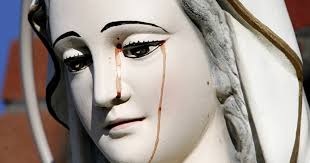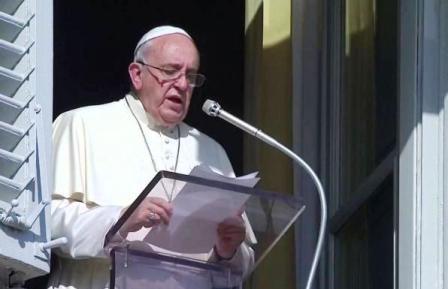ROME — Claims of weeping statues, apparitions of divine personages of all orders, and miraculous bread are less likely to be accepted as ‘miracles’ by the Catholic Church.
The Vatican has introduced new guidelines on unexplained religious phenomena, significantly altering the way the Roman Catholic Church addresses claims of supernatural events, such as weeping statues of the Virgin Mary. Backed by Pope Francis, these guidelines aim to modernize the Church’s approach and prevent false mysticism.
Cardinal Victor Manuel Fernández, head of the Dicastery of the Doctrine of the Faith, announced the new guidelines on Friday, emphasizing the Church’s stance against false mysticism. These guidelines are the first update since 1978 and are intended to protect the 1.4 billion Catholics worldwide from fraudulent claims.
The revisions will impact Catholics globally, particularly in regions where belief in miraculous events is strong, such as Southern and Eastern Europe, and Latin America. Previously, local bishops had the authority to rule on such phenomena, which often led to inconsistent decisions and confusion among the faithful. With the new guidelines, the Vatican’s department of doctrine will centralize and streamline the evaluation process.
Historically, some sightings have become significant in Catholic lore, such as the Virgin Mary’s appearances at Lourdes in France and Fatima in Portugal, which remain major pilgrimage sites. However, the Vatican has recognized that some bishops have mistakenly validated false claims, and at times, successive rulings by different bishops have led to contradictions.
The new guidelines will classify claimed phenomena into six categories. The most accepted will be labeled “nihil obstat,” meaning bishops can acknowledge the pastoral value of a vision without confirming its supernatural authenticity. The least credible will be designated “declaratio de non supernaturalitate,” requiring bishops to declare such phenomena as non-supernatural.
Pope Francis has shown skepticism towards some apparition claims, such as the Medjugorje Apparitions reported by six young Bosnians. In 2017, he expressed doubt, preferring to believe in a more traditional image of the Madonna rather than one that “sends daily messages.”
The Vatican’s new stance is a move towards ensuring the credibility of the Catholic Church and protecting its followers from deceit, while still allowing personal belief in such phenomena without official endorsement.
CASE STUDY
Trevignano Romano, Italy (March 2024) — The Catholic Church has declared the alleged miracles associated with a statue of the Virgin Mary in central Italy as false. The diocese of Civita Castellana concluded after a thorough investigation that the supposed supernatural events, including the statue weeping tears of blood, did not occur.
“After fervent prayer, the non-supernatural nature of the facts in question is decreed,” stated the diocese following its probe into the reported occurrences in Trevignano Romano.
Since 2016, Gisella Cardia, a 54-year-old Sicilian, claimed she had been in direct communication with the Virgin Mary and had received the stigmata—crucifixion wounds resembling those of Jesus Christ. Cardia’s assertions drew hundreds of pilgrims to Trevignano Romano, seeking to witness the purported miracles, much to the frustration of local residents.
Cardia reported seeing the Virgin Mary statue, which she had brought from the pilgrimage site of Medjugorje in Bosnia Herzegovina, crying tears of blood. She also claimed the statue performed a modern-day version of the miracle of the loaves and fishes. “It was a pizza for four and 25 of us ate from it. It never got any smaller,” she told an Italian YouTube channel, describing how a single pizza supposedly fed a large group without diminishing in size.
Cardia’s past includes a 2013 conviction for fraudulent bankruptcy. She later founded a charity aimed at aiding the sick, funded by individual donations. However, some donors later alleged they had been deceived, raising further skepticism about her claims.
This verdict by the Catholic Church aims to quell the fervor surrounding the supposed miracles and restore normalcy to the small town of Trevignano Romano.



